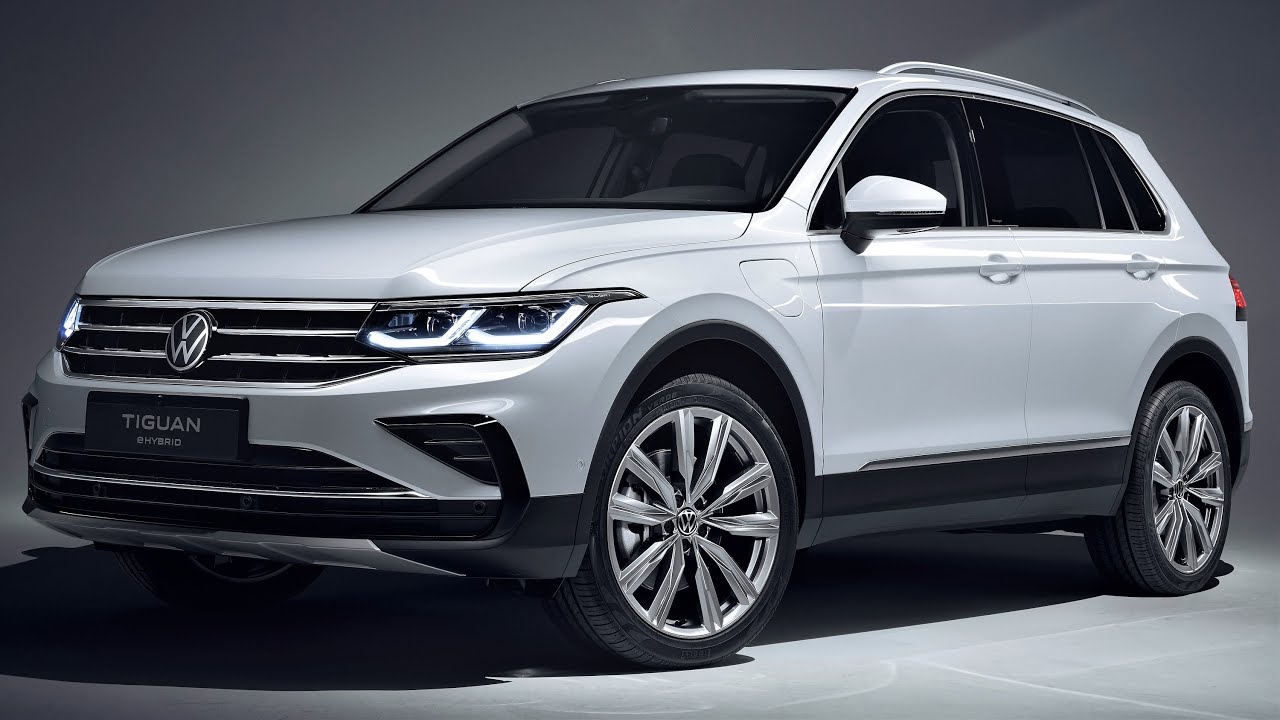2021 Volkswagen Tiguan eHybrid – Efficient Urban SUV. 2021 Volkswagen Tiguan eHybrid – Interior and Exterior. Please Consider Subscribing.
0:00 Interior and Exterior
0:59 Facts and Figures
Volkswagen has restructured the range of powertrains for the Tiguan. One of the highlights will include the new Tiguan eHybrid with a plug-in hybrid drive (180 kW / 245 PS). The Tiguan eHybrid is an integral component of Volkswagen’s electrification strategy. Dr Frank Welsch, Member of the Brand Board of Management with responsibility for Technical Development: “We designed the drive concept in such a way that the Tiguan eHybrid always starts in E-MODE, the enhanced electric driving mode, providing the battery has been charged sufficiently. According to the WLTP, the vehicle can cover around 504 kilometres on a single battery charge. As a result, most of our customers will be able to cover their average daily trips under electric power alone, and that’s what it’s all about: zero local emissions in practice!” The easy-to-configure hybrid mode enables the vehicle to store sufficient electrical energy, even on long journeys, to allow you to drive the final distance to your urban destination with zero emissions. The Tiguan eHybrid can be driven in all-electric mode at up to 130 km/h; in Hybrid mode, the electric motor supports the efficient TSI (turbocharged direct injection petrol engine) during acceleration. The combination of electric motor and combustion engine in this hybrid mode delivers an impressive level of power, as the electric motor provides additional boost. GTE mode allows particularly dynamic driving and is activated by pressing a button next to the DSG gear lever. In GTE mode, the electric drive motor and TSI engine join forces to deliver the maximum system power of the Tiguan eHybrid.
Inside the vehicle, Volkswagen has added an all-new touch module3 for the climate control functions. In addition to touch buttons, generously sized and illuminated touch sliders are used for fan and temperature control. The touch buttons can also optionally be used to operate functions such as the seat, rear window and windscreen heating, and to open the air-conditioning menu. A digital version of the new multifunction steering wheel featuring illuminated touch islands and sliders is also available as an option. Illuminated USB-C ports are located under the air-conditioning module.
Another of the Tiguan’s technical highlights is the new range of infotainment systems (MIB3), which enable the user to connect to a variety of online services. Thanks to an Online Connectivity Unit (OCU) with integrated eSIM, the enhanced functions of the MIB3 systems include the online services of We Connect (prepared for unlimited usage period) and We Connect Plus (prepared for free use for one or three years in Europe).
Volkswagen is bundling its systems for assisted driving under the umbrella brand IQ.DRIVE. The Tiguan takes assisted driving one step further with Travel Assist – the first time that this system has been available in the product line. The system can take over steering, braking and acceleration of the new Tiguan at speeds of between 0 km/h (with DSG dual clutch gearbox) or 30 km/h (manual gearbox) and 210 km/h (the driver remains responsible for control of the SUV at all times). To do so, the system uses functions including Adaptive Cruise Control2/3 (longitudinal guidance) and the Lane Assist lane keeping system2/3 (lateral guidance). The driver activates the system by pressing a separate Travel Assist button on the new multifunction steering wheel. The driver has to keep their hands on the steering wheel even when Travel Assist is active. The Tiguan’s electronics register this via touch- sensitive surfaces on the steering wheel. Touch detection is a great deal more reliable than steering angle-based systems even on long and very flat stretches of road.
The latest generation of adaptive cruise control (ACC) proactively takes into account local speed limit information, town boundary signs, junctions and roundabouts. For this purpose, the assist system uses the signals from the front camera and the GPS and map data from the navigation system for control. The ACC in the Tiguan is an example of how even familiar assist systems are constantly evolving and becoming more intelligent. Another example is the Autonomous Emergency Braking Front Assist2 system that comes as standard in the Tiguan and now features an extended range of functions. Improvements have been made to how the system reacts to persons that are crossing the road in complex situations. Lane Assist is a third example of an enhanced system. The latest generation of the lane keeping system is now able to detect road lanes and lane boundaries such as grass edges even more accurately.









